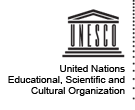The project will target 80 practicing journalists comprising of radio managers, citizen journalists, radio presenters and talkshow hosts from Gulu, Lira, Kitgum, Soroti and Arua districts. Participants attending the training will comprise of 50% women and 50% males.The project will contribute to promoting good governance and transparency by building professional capacities in peace journalism in Uganda.
Provide skills and knowledge in peace journalism to 80 journalists (50% men and 50% women) working in media houses in Gulu, Kitgum, Lira, Soroti and Arua districts in...
